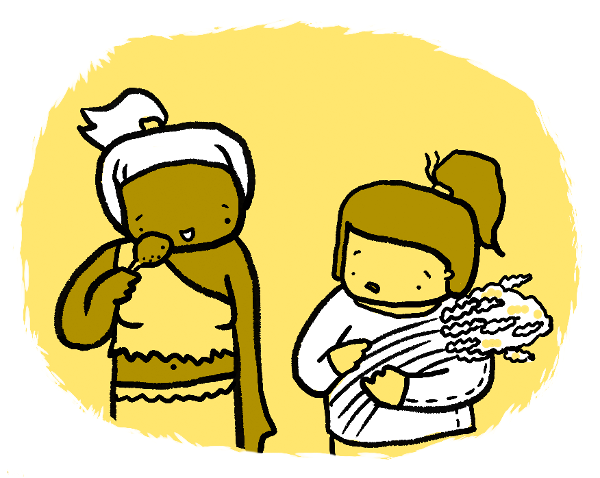One of the most common questions I get about the Paleo diet is this:
“Why should I exclude ‘healthy’ whole grains from my diet?”
Here’s how I answer:
Every living creature, including us humans, is physically engineered to consume the diet it was meant to eat.

As hunter-gatherers, we don’t have the instinct to graze like animals, who have special chambers in their stomach to digest grass and grass seeds.
Instead, human stomachs make hydrochloric acid, which is designed to break down proteins, not starch.
The grains we like to think are ‘healthy’ like rice, corn and wheat, are starchy grass seeds.
They require a different mix of digestive enzymes than the ones human produce to digest meat, fats and vegetables.
You see, all seeds have elaborate defense mechanisms such as lectins and phytates to protect them from insects. These indigestible seed coatings are toxic to humans and are best suited for animals who have eaten them for millions of years and have adapted specifically to their toxins.
Before the Agricultural Revolution over 10,000 years ago, grains were not an important part of the human diet. In fact, human health rapidly declined when we began eating cultivated crops and dairy products. People were shorter, had weaker bones, more cavities, a compromised facial structure and suffered from arthritis.
Wheat, rye, barley, kamut, and oats (which are contaminated during processing) all contain gluten, which may cause gastrointestinal distress (more.).
In the present day, high-yield grains have been created through hybridization, a process that creates wheat with higher gluten content than that of ancient grains. These new hybrids are even more indigestible, creating a higher occurrence of allergies and autoimmunity issues, as seen in so many children and adults recently.
For all these reasons, the Paleo diet is based on the food that we humans ate as hunter-gatherers, before we settled to become cultivators. This includes meat, fish, eggs, fruit, nuts and root vegetables. These are the foods our bodies were designed to properly digest.
Learn more in our Paleo Quick Start Guide here >>
In my next blog post, I’m going to show you how you can bake traditional gluten-filled recipes with Paleo friendly alternative ingredients.
And the results are delicious! 🙂
Update: you can find it here: Myth: Flour Is Forbidden on Paleo >>
To health and happiness, Carin Andersson
P.S. Have some questions of your own about the Paleo diet? Just leave a comment and tell me what’s on your mind. I’m happy to help!